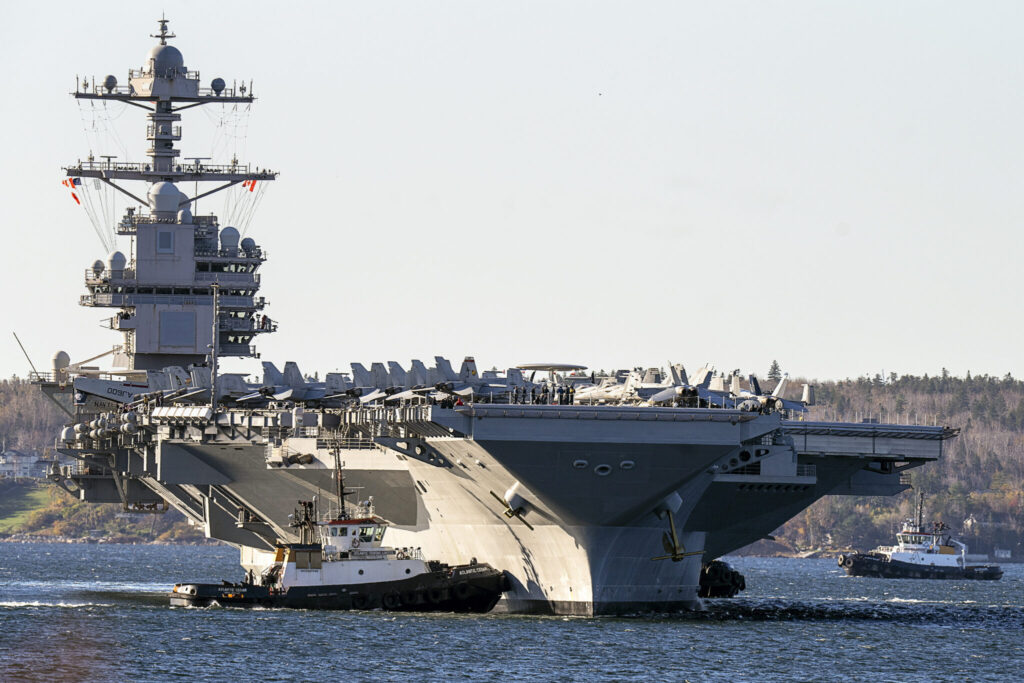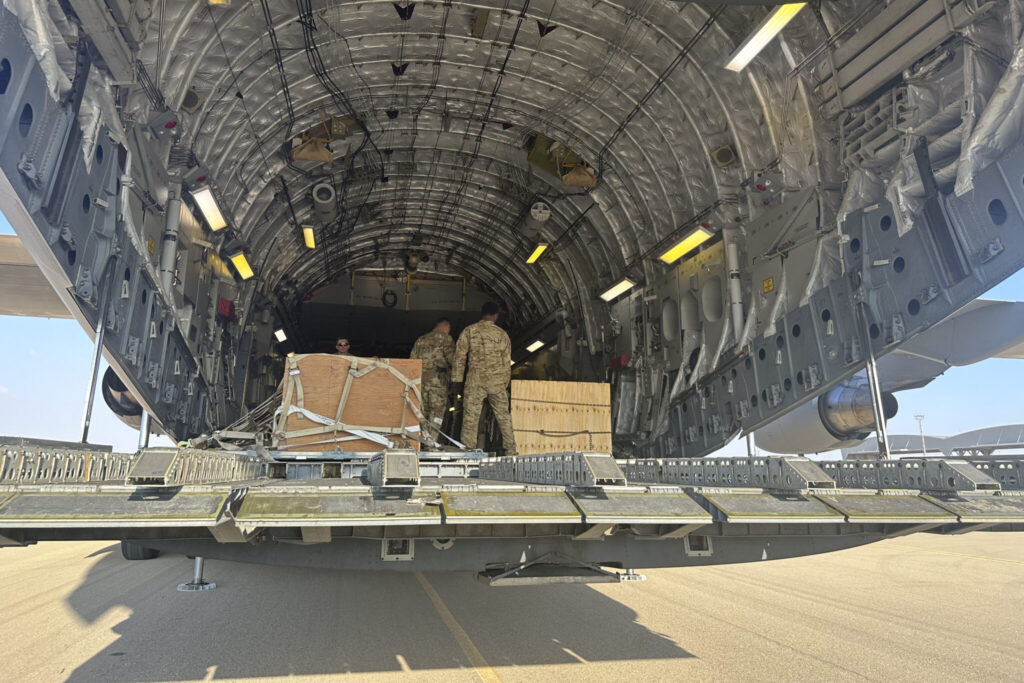Within hours of the horrific Oct. 7 attack by Hamas, the U.S. began moving warships and aircraft to the region to be ready to provide Israel with whatever it needed to respond. On Tuesday, more ships and forces were heading toward Israel, and other troops in the U.S. were preparing to deploy if called on. One U.S. aircraft carrier and its strike group is already in the eastern Mediterranean and a second one has left the U.S. and is heading that way. In addition, three Marine warships with are moving into the region. Scores of aircraft were dispatched to U.S. military bases around the Middle East, and American special operations forces are working with Israel’s military in planning and intelligence. And, as of Tuesday, five shipments of U.S. weapons and equipment had arrived in Israel. The buildup reflects growing U.S. concern that the deadly fighting between Hamas and Israel will escalate into wider regional conflict. So the key mission for American ships and warplanes is to establish a large and visible presence that will deter Hezbollah, Iran or others from taking advantage of the situation.
A look at what weapons and assistance the U.S. military is providing, according to The Associated Press:
More US ships head toward Israel, 2,000 troops on heightened alert
Newslooks- WASHINGTON (AP)
NAVY SHIPS AND PLANES
One of the most visible examples of the U.S. response is in the waters surrounding Israel — an array of massive warships are in or moving toward the eastern Mediterranean and the Red Sea. The USS Gerald R. Ford carrier strike group was ordered to go to the Eastern Mediterranean within hours after the attack, and on Tuesday the Pentagon said the ship’s six-month deployment in the region has been extended and gave no end date. Defense Secretary Lloyd Austin in recent days ordered the USS Dwight D. Eisenhower carrier strike group to join the Ford in the Eastern Mediterranean, and those ships are now heading across the Atlantic Ocean.

On Tuesday, the Pentagon said it was sending the USS Bataan amphibious ready group, which consists of three ships carrying thousands of Marines from the 26th Marine Expeditionary Unit, into the region. A U.S. official said the USS Mesa Verde, an amphibious transport dock, is in the Mediterranean Sea, and the Bataan, an amphibious assault ship, and the USS Carter Hall, a dock landing ship, were in the Gulf region and are now heading toward the Red Sea. The official spoke on condition of anonymity to provide details on ship locations.
The ships carry helicopters and assault craft that can insert Marines into hostile territory or provide medical care or other assistance.
The warships, particularly the aircraft carriers with their fighter jets and surveillance aircraft, have historically proven to be an effective deterrent against Iranian and other militant activity in the Middle East. The carriers serve as command-and=control centers and can conduct information warfare. They carry F-18 fighter jets that can fly deterrence missions or strike targets. And they also have E2-Hawkeye surveillance planes that can provide early warning on missile launches and detect enemy movements.
WEAPONS AND SPECIAL OPERATIONS FORCES
Aircraft loaded with U.S. weapons have already begun arriving in Israel. Austin watched as crew were unloading one C-17 transport plane on Friday at Nevatim air base east of Gaza. On Tuesday, the Pentagon said that five such deliveries have already been made and more are expected.
U.S. defense officials say the administration has already given Israel small diameter bombs, other munition and interceptor missiles for its Iron Dome air defense system, and more will come. The U.S. is also getting U.S. defense companies to expedite weapons orders by Israel that were already on the books, including munitions for Israel’s Iron Dome air defense system.

The Iron Dome munitions the U.S. provides to Israel will likely be in addition to ones Israel had already ordered and will be part of ongoing military assistance packages. The packages will also include JDAM kits — essentially a tail fin and navigation kit that turns a “dumb” bomb into a “smart” bomb that can be guided to a target,.
In addition, the U.S. has set up a small cell of special operations forces that has been working with Israel, providing intelligence and planning, as well as advice to the Israeli Defense Forces on hostage recovery efforts. The Pentagon has said those troops are not participating in any hostage rescues and that there are no other U.S. military forces on the ground in Israel.
AIR FORCE WARPLANES
The Pentagon has also ordered additional warplanes to bolster A-10, F-15 and F-16 squadrons at bases throughout the Middle East. More will be added if needed.
Air Force Secretary Frank Kendall said last week at an Atlantic Council event that the service was ordering units that were about to come home to remain in place along with their replacements.
The U.S. Air Force already has significant airpower in the region to conduct manned and unmanned operations, most notably in Syria where an Air Force F-16 last week was ordered to shoot down a Turkish drone that was posing a threat to U.S. ground forces.
AND MORE TROOPS ARE GETTING READY
Austin ordered about 2,000 U.S. forces to be prepared to deploy if needed in the coming days and weeks. Pentagon spokeswoman Sabrina Singh told reporters on Tuesday that the units have not yet been identified. She said the troops would be able to respond quickly, particularly to provide intelligence and surveillance, transportation, medical assistance and other aircraft needs.
The 2,000 troops are likely to include additional Air Force and Army personnel.






